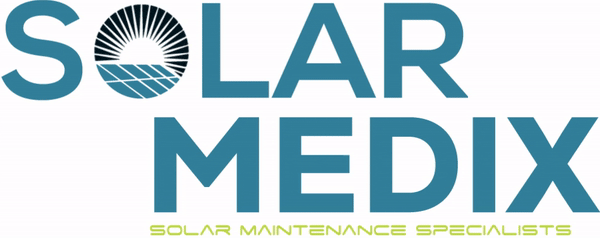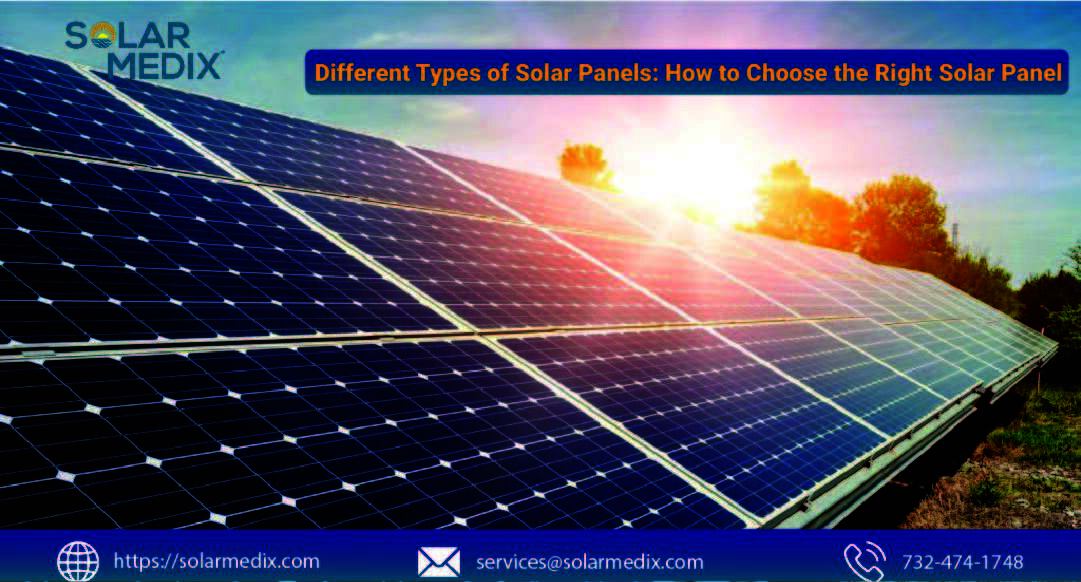Choosing the right solar panel according to your needs and suitability is not a straightforward process. You must consider numerous factors, along with your budget and solar panel power capacity, to choose from the range of options available.
But Don’t Worry! Solar Medix simplifies the buying process for U.S. solar panel buyers by translating technical specification sheets into a user-friendly web database. To help buyers find the best solar system at a reasonable price, diminishing chaos by allowing them to compare various options.
This article covers everything from the structure of the solar panels, life spans and warranties, installation cost, and cost per watt. So, you must give it a go before going to buy a solar panel system.
4 Major Types of Solar Panels
With our experience of over 19 years, we have compiled a list of four major solar panels types here:
1. Monocrystalline Solar Panels
Monocrystalline solar panels are known for their efficiency (18-24%), black color, and sleek design. As their name implies, they are made from a single crystal structure, which causes more power output per square foot.
Experts at Solar Medix believe that monocrystalline solar panels are very durable and the most efficient of all types of solar panels out there. They come with a 25-40-year lifespan, depending on maintenance conditions.
Monocrystalline Solar Panel Cost
- estimated cost of $1.00-$1.50 per watt
- average price is $300 to $1000
2. Polycrystalline Solar Panels
Polycrystalline solar panels incorporate multiple silicone crystals melted together in one cell. It gives them a blue color and a mosaic appearance. They are 31% less efficient than monocrystalline solar panels, but they cost less as well.
Polycrystalline solar panels are the best options and are an ideal choice for you if you have an insufficient budget but sufficient space, as they come with 25-30 years of lifespan.
Cost of Polycrystalline Solar Panels
- cost $0.70-$1.50 per watt
- Low upfront costs: $150-$300 for basic residential use
3. Thin Film panels
Thin-film solar panels are the most flexible ones in the range, as they can be installed even on uneven surfaces, where other solar panels do not work well. However, they have a reduced lifespan (10-20 years only) and are 7-13 % less efficient than monocrystalline solar panels.
Thin-Film Solar Panel Cost
- Thin-Film Solar Panels cost between $0.50-$150 per watt
- The national average installation cost ranges between $3000-$7000.
4. Passivated Emitters and Rear Cell Panels (PERC)
PERC is the new solar panel technology with higher efficiency than traditional monocrystalline cells by adding a passivation layer in the rear surface that reduces the heat of the metal back sheet, allowing greater solar energy collection in a smaller footprint.
Despite slightly higher production costs due to added materials, PERC panels can be manufactured on the same equipment and are 0.86% to 20.41% more efficient than monocrystalline panels.
PERC Cost
- Lowest cost per watt ($0.32-$0.65 )
- More expensive
- Installation Cost of the Residential Solar Panel: $3000-$7000
Considerations For Choosing the Right Solar Panel Type
Choosing the ideal solar panel is similar to choosing the perfect pair of shoes: it must meet your specific needs and conditions.
Energy Requirements
Understanding your energy requirements is the key process. Monocrystalline Solar Panels are suitable for homes with higher energy demands
Available Space
Polycrystalline panels are economical for the ample available roof space. But we recommend higher efficiency options for a smaller space.
Location of Installation
Thin-film panels perform well under less direct sunlight. PERC solar cells thrive in sunny climates. areas with direct sunlight benefit most from monocrystalline or PERC systems.
Budget
The initial installation cost varies across the set-up but you must consider long-term benefits.
Maintenance Cost
Remember, the maintenance cost and potential municipal incentives or rebates may have an impact on overall expenditures.
Wrapping it Up!
When choosing a solar panel, factors such as efficiency, lifespan, and cost play a crucial role. Monocrystalline solar panels lead the pack in efficiency and durability, but at a higher price point. Polycrystalline solar panels offer a more budget-friendly option, comparatively. While thin-film panels cater to unconventional installation needs, PERC panels strike a better balance between efficiency and cost than traditional solar panels, making them a compelling choice for many consumers.
Whatever your needs and budget, Solar Medix experts are here to help you through the process, taking care of both the environment and your safety and wallet.
The output, efficiency of the solar panels, and good manufacturer warranty, are some indicators of solar panel quality that you must consider while choosing one.
To determine the optimal solar panel size, calculate daily energy consumption, consider location, panel efficiency, and capacity, account for system losses, consider roof space, or consult a professional.
To know your required solar capacity, divide your annual kWh by 1200. That will result in a 20 kW system for a 24000 kWh energy consumption in your last 12 bills.
Mostly 60-cell solar panels are used for residential solar panels, measuring 5.5 feet by 3 feet and weighing 40 pounds. But we recommend a 72-cell panel for commercial use, measuring 6.5 feet by 3 feet and weighing 50 pounds.
Monocrystalline solar panels are the purest, most highly efficient, and space efficient as well.













